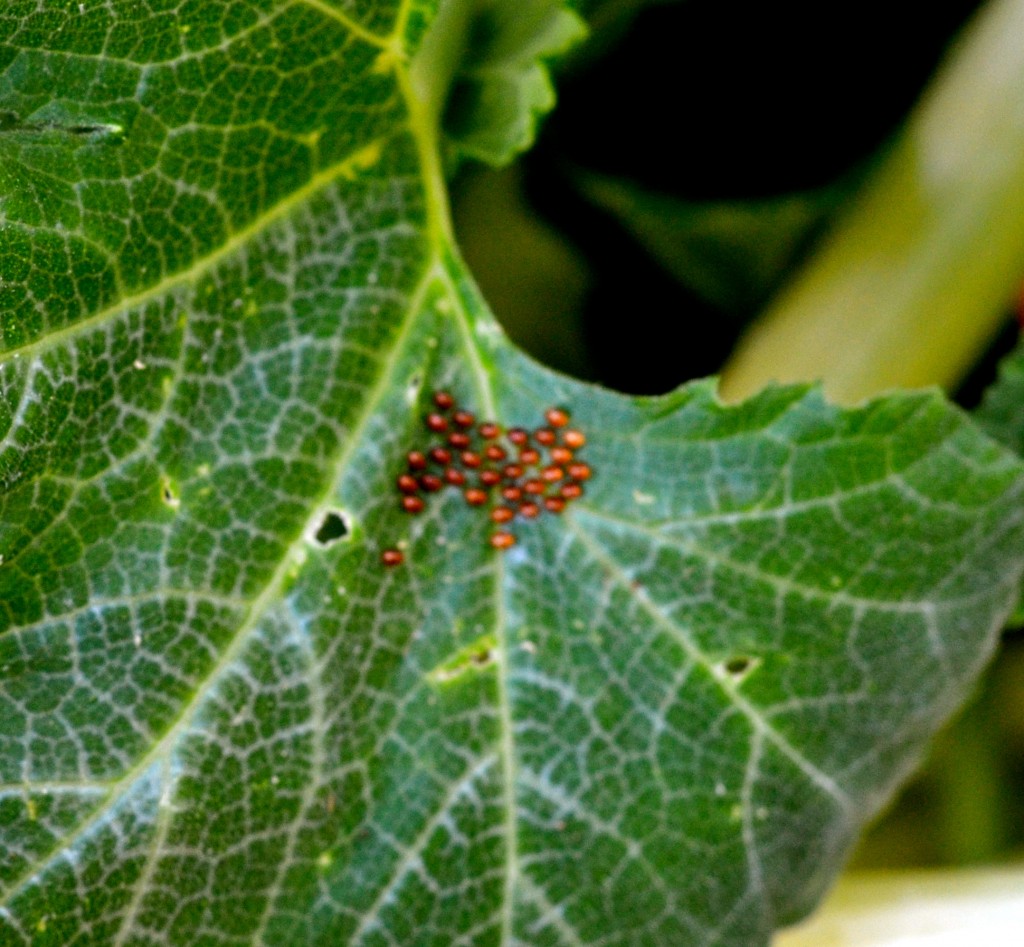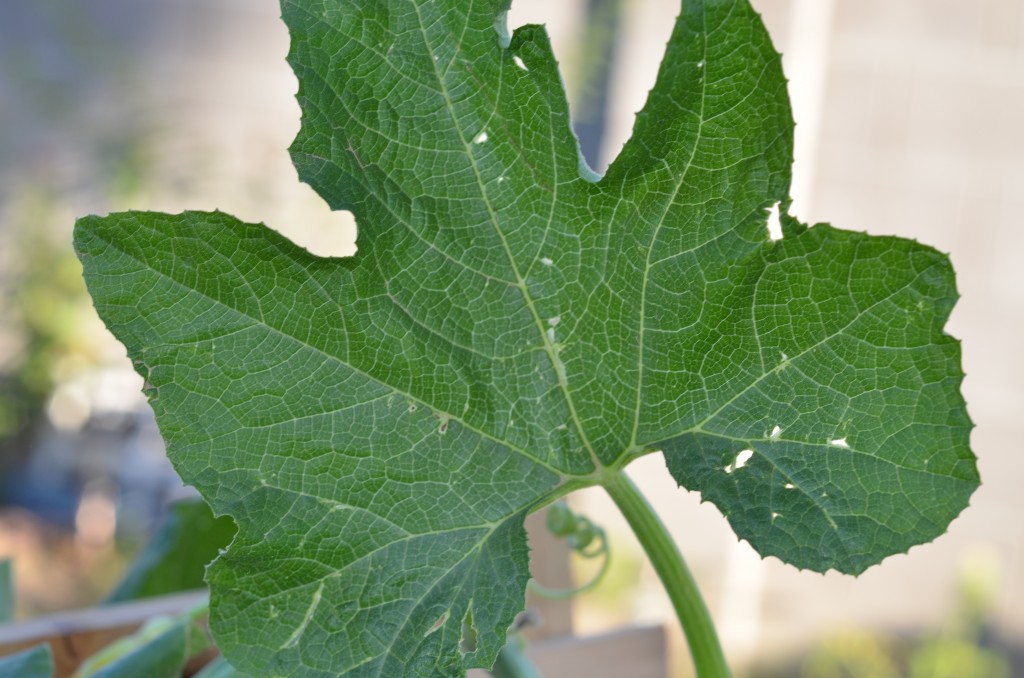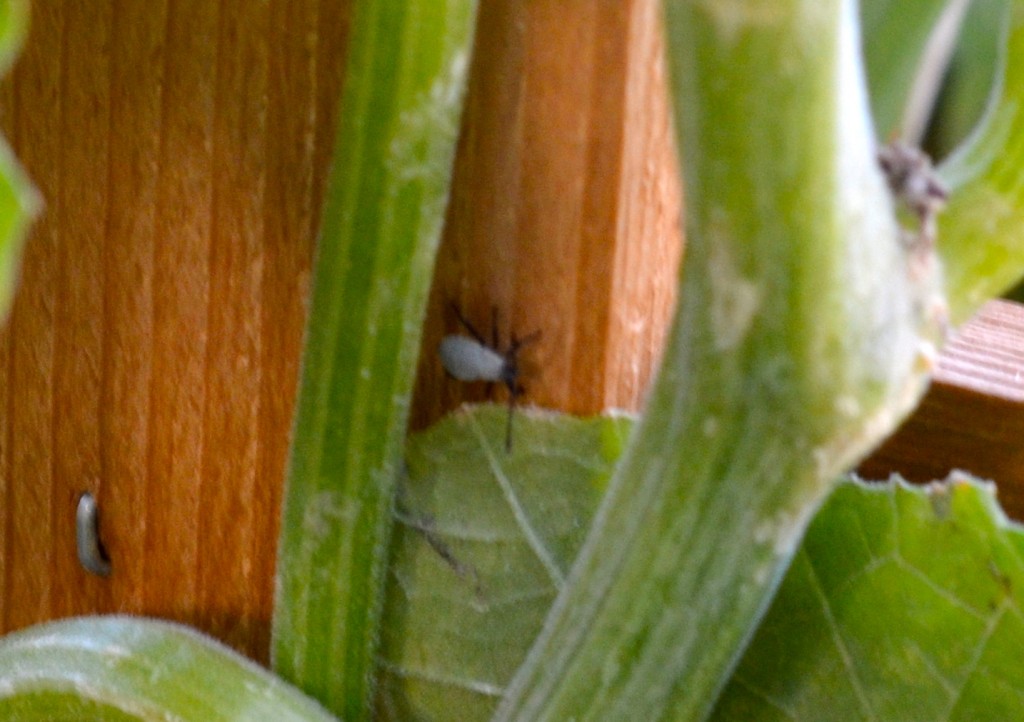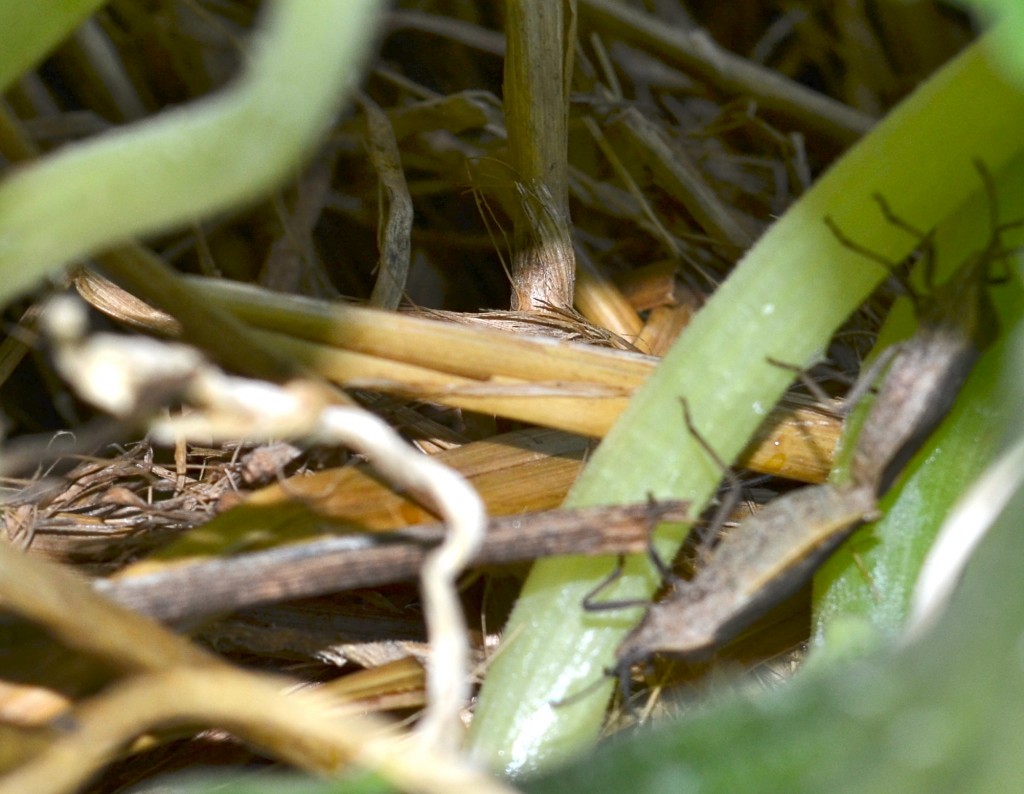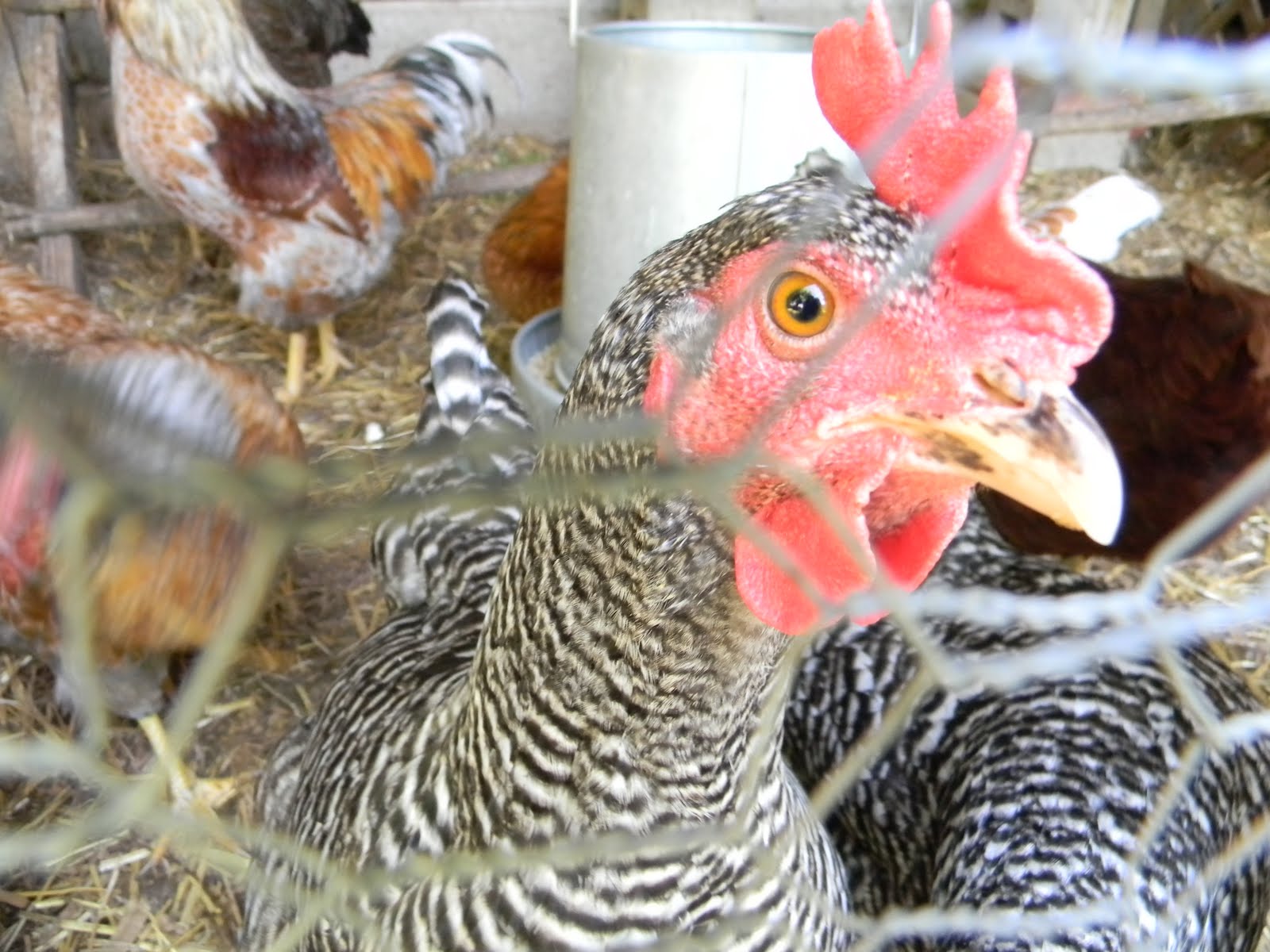Last week, I missed being at my “real” garden for about three days because I was busy with other things. Big Mistake!!! When I arrived on Thursday, I discovered squash bugs doing an inappropriate mating ritual on my beautiful squash plants. Being a natural girl, I started looking for ways to take care of the problem without chemicals.
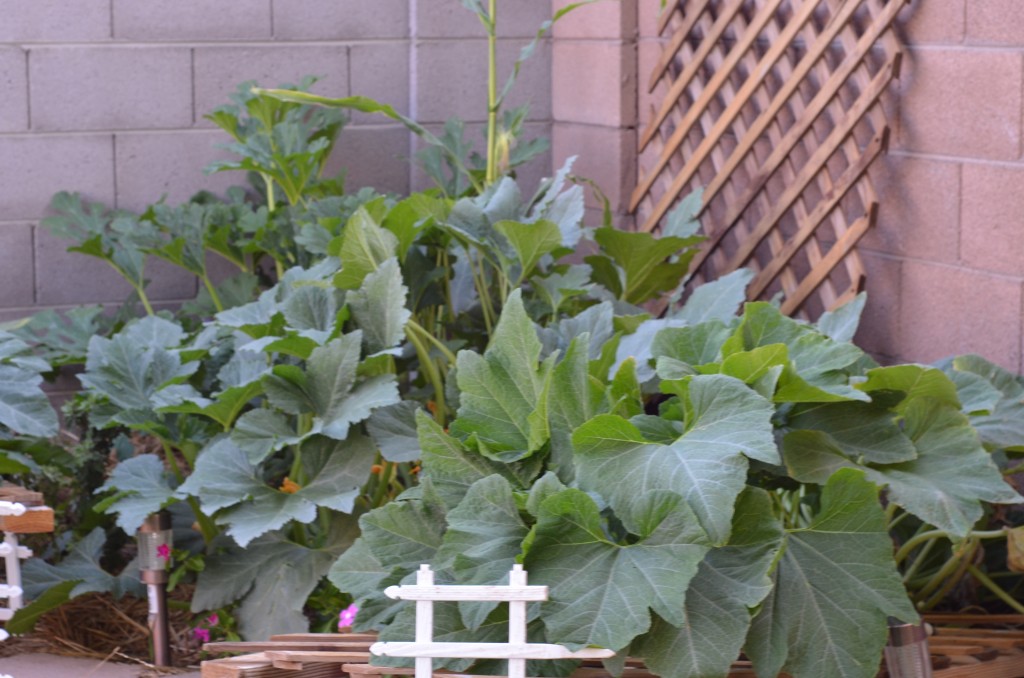 There are four squash plants in this bed. 3 crooknecks and 1 zucchini
There are four squash plants in this bed. 3 crooknecks and 1 zucchini
Garden pests are sneaky little creatures. I’d been carefully watching my plants prior to their arrival, looking for eggs and hatchlings, but didn’t see anything till the whole plant was covered with creepy little bugs.
After the invasion, I definitely found signs everywhere.
Like squash bug eggs. I gently rubbed them off the leaf into a glass of soapy water.
Leaves with big chunks eaten out of them. Stinky nymphs!
Here’s what I’ve done so far to get rid of them.
1. Removed all bugs that I can see (or catch!) and drop them into a glass of soapy water. Squishing bugs grosses me out. Ugh.
2. Removed eggs and give them the same treatment.
3. Removed the dead matter around the plants so there isn’t any place for the bugs to hide. Well, other than the leaves!
4. Sprayed the leaves with soapy water. I don’t actually know if this works for squash bugs but it was all I had at the moment.
5. According to a grower at the Roadrunner Farmer’s Market, Neem oil should work. I don’t want to use Neem because if ingested, it’s reported to contribute to miscarriage. In case I get pregnant, I think it’s better not to put that on my food. I checked with Dave the Garden Guy and he says Diatomaceous Earth should work. So I’m going to get an applicator today. I bought a huge bag of food grade DE from a feed store.
I learned a few things with the squash bug incident.
1. Don’t use straw for mulch because they love to hide in it. I suspect this is true of other pests as I’m not sure what a better solution is so maybe some of my wise farmer/gardener friends can help. Maybe just a heavier compost?
2. Don’t plant so many of the same thing in an area. Thankfully squash leaves are big and fairly easy to search for bugs and eggs but I might not have had so many if they’d been a little more separated. Or not. I’m too new at this to know.
3. Include companion plants that repel pests – like nasturtiums or marigolds. I was lazy this year and didn’t include them in this part of the garden. I paid for it!
For now, I’m still picking the bugs off my plants because they don’t seem to be killing it – yet. If I can’t clean up the problem in the next week or so, I’ll probably destroy the most infested plants so they don’t infect my fall crops. It’s time to start planting that next!!
If you’ve dealt with these bugs before and have any natural, non-chemical options for me, I’d love to hear them!

